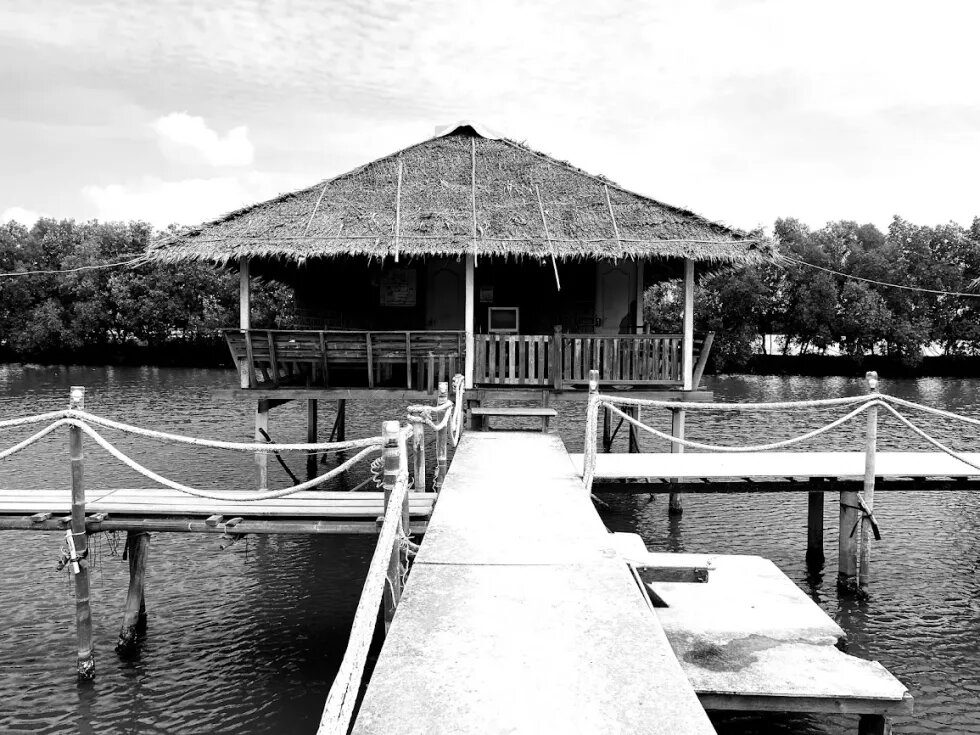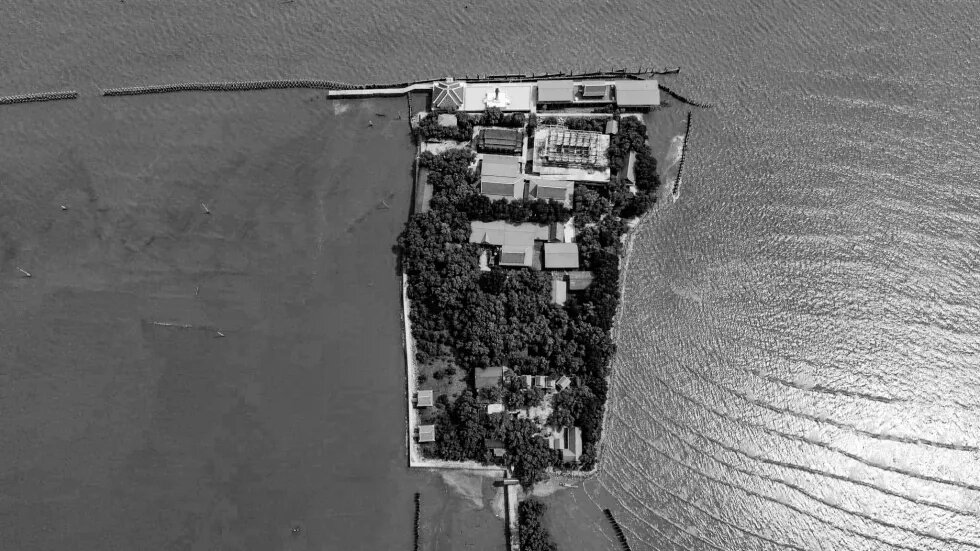
Ten years ago, Thailand faced its worst ever flooding which killed over 800 and caused over US$45 billion in damage. The floods inundated large swathes of Bangkok and the surrounding areas for two months. This year Thailand once again experienced widespread flooding, affecting over one million and killing nine people. Fortunately, it looks like Bangkok will be largely spared this year. This is a big relief since the larger Bangkok Metropolitan Region contributes to almost half of Thailand’s economic output.

Nonetheless, flooding this year should be a warning and wake up call to Bangkok that it needs to change its water management and cannot repeat the mistakes that made flooding worse in 2011. In the years prior to 2011, the city’s pattern of unregulated and sprawled-out urban development had a number of negative effects on the physical environment and increased the city’s overall vulnerability to flooding. Filling hundreds of canals to make way for roads and buildings and the heavy concretization of the land’s surface increased the amount of run-off. Over-pumping groundwater by factories caused extensive land subsidence which debilitated flood protection. The city’s ground has already sunk more than one meter. The illegal construction in floodways and green zones by real estate developers harmfully encroached upon natural drainage channels and flood storage areas. The failure of flood-control infrastructure also contributed to the high level of devastation experienced during the 2011 flooding. Depending on flood-control infrastructure creates a false sense of security which suggests that changing the built environment through land use planning and ecosystem protection and improving flood-response capacity are not needed.
These changes to the city’s environment and an overreliance on concrete, structural measure (grey infrastructure) made the flooding worse than it would have been and multiplied the losses Bangkok residents suffered.
These changes to the city’s environment and an overreliance on concrete, structural measure (grey infrastructure) made the flooding worse than it would have been and multiplied the losses Bangkok residents suffered. In response to the floods, however, the Thai and Bangkok governments reverted to the same old mindset and solutions that seek to conquer nature through engineering feats. Consequently, without making any significant changes to land use planning, they raised roads around Bangkok and sought to control future floods by adding or improving additional grey infrastructure, such as pumps, drainage tunnels, and water gate. However, the problem is that flood-control infrastructure does not always reduce risk, but instead can merely redistribute it. It may simply raise flood levels in other areas— escalating flood stages upstream, hastening the flow of water downstream, or increasing flooding on the other side of the river. These effects can harm areas that are already developed or which have less flood-control infrastructure.
An additional problem is that climate change will make precipitation throughout Thailand more unpredictable but also more intense and, consequently, more difficult to control. It is expected to increase flow volume in Thailand. For example, one study found an increase of over 20% in runoff in Central Thailand due to climate change. Further, due to its low elevation, Bangkok is vulnerable to sea-level rise, both due to climate change but also to continual groundwater withdrawal which causes the city to sink further. One scenario portends this rise to be 32 cm by 2050. Consequently, coastal flooding will likely worsen but also rising sea levels and land subsidence mean that it will take longer for floodwater to drain downstream. Some pipes in its drainage system are at uneven heights which reduces their drainage capacity. Greenpeace predicts that due to climate change, urbanization, and subsidence, if a 10-year coastal flood occurs in 2030, over 96% of Bangkok's land could be submerged.[i]
Bangkok’s sewage system is already more than 30 years old. It is suffering from a lack of maintenance, land sinking problems, and garbage and sediment clogging, which greatly reduce the drainage capacity.
A final problem is Bangkok’s poor drainage system. “Bangkok’s sewage system is already more than 30 years old. It is suffering from a lack of maintenance, land sinking problems, and garbage and sediment clogging, which greatly reduce the drainage capacity,” said Thanawat Jarupongsakul, a disaster expert at Chulalongkorn University’s Department of Geology.[ii] Besides rubbish, especially plastic waste, clogging the city’s drain, a major shortcoming of the system is that rainwater and sewage share the same drainage pipe which pour out into the city’s canals. Consequently, grease from food (often poured in by street vendors) and wastewater clog up the drains which are meant for floodwater. Another problem is small diameter of the city’s pipes, ranging from 50 to 80 cm, which slows down drainage of excess rainwater.[iii] Upgrading the city’s drainage system has been discussed for the past couple of decades but little has been done, even though its poor performance worsened the floods in 2011.
To make matters worse, Bangkok has become a concrete jungle with very little permeable space for rainwater, containing the lowest amount of green space of all major Asian cities, with approximately 3.3 square meters per person. In comparison, Singapore provides 66 square metres per person and New York City 23.1 square metres. Opened in 2017, the Chulalongkorn Centenary Park certainly helps to reduce flooding by storing floodwater but it is small, only 11 acres. Not only does the lack of green space exacerbate floods but also makes the city even hotter.
Due to all of these aforementioned problems, a moderate amount of rainfall (4 mm) can inundate the city and the city’s vulnerability to heavy, widespread flooding remains high.
So the question then becomes what should be done? In the short-term, such as by 2030, the Thai and Bangkok government need to shift away from its one-size-fits-all approach. One example comes from the Dutch who have moved away from solely relying on grey infrastructure to control floods. They have instead removed some dykes and gave more space for water to flow inland. In the 19th century, this concept fit Bangkok's relationship with the Chao Phraya: It was a water-based city, full of canals and river houses.
In the short-term, such as by 2030,
the Thai and Bangkok government need
to shift away from its one-size-fits-all approach.
Another example comes from China’s ‘sponge cities’ program which seeks to increase the amount of permeable space by adopting nature-based solutions, such as gardens, green roofs, and restoration of urban wetlands, which will enable their cities to absorb additional water. The program’s goal is by 2030 for such sponge features to comprise 20% of urban space so that 80% of annual precipitation.[iv]
These nature-based solutions together with others such as green walls and additional drainage basins would not only reduce stormwater runoff but also improve wastewater quality which has become a major issue in Bangkok nowadays. Further, given Bangkok’s drinking water challenges during recent dry seasons, wastewater and stormwater should no longer thought as harmful water which need to be separated from humans. Instead, these types of waters can become alternative and more sustainable sources of water supply.[v]
Further, the Bangkok government together with the WePark network, a public group of landscape architects, civil society advocates, and academics seeking to improve green space in Bangkok, have devised a solution to address Bangkok’s dearth of parks. Since it has so far been difficult to build new large parks due to funding issues and lack of empty space, instead together, with the support of local communities, they are building ‘pocket parks:’ small parks constructed in vacant plots of land, between and underneath expressways, and any other empty spaces in which parks can be built. These parks point a way forward. They should be prioritised by Bangkok’s government but also constructed with storing stormwater in mind so that these parks would not only reduce the city’s oppressive heat but also its flooding risk.
Finally, as the recent example of residents in Sukhothai not receiving an adequate warning before severe floods hit their communities, improving early warning systems, particularly in Bangkok’s outer areas where drainage systems have not matched the city’s expansion, is also important.
But in the long-term, say from 2050 and beyond, these measures will sadly not suffice. Sea levels will rise, the city will keep sinking, and it will be inundated repeatedly. Climate migration will occur. The poor will suffer more than the middle class and upper class would. Eventually the city centre could likely become unlivable and government offices, commercial buildings, and homes will have to be rebuilt upriver.
After much of the population migrates to higher ground, Bangkok could revert to its former 19th-century urban form of being a water-oriented city. That is, people could rebuild their homes into floating homes or houses on stilts in which they could live on their second floor. They could travel by water buses and taxis and personal boats. The great old buildings of Bangkok could, with great effort, be preserved by making them more resilient and protecting them with barriers. The rebuilt town could also become a tourist attraction like Venice or Amsterdam is today. Floods, consequently, would no longer be a threat but merely part of everyday life.
__
Dr. Danny Marks is an Assistant Professor of Environmental Politics and Policy at Dublin City University. His research interests are political ecology, environmental justice, climate governance, disaster risk reduction, with a focus on Southeast Asia.
The views expressed by the author are not necessarily those of Heinrich Böll Stiftung.


